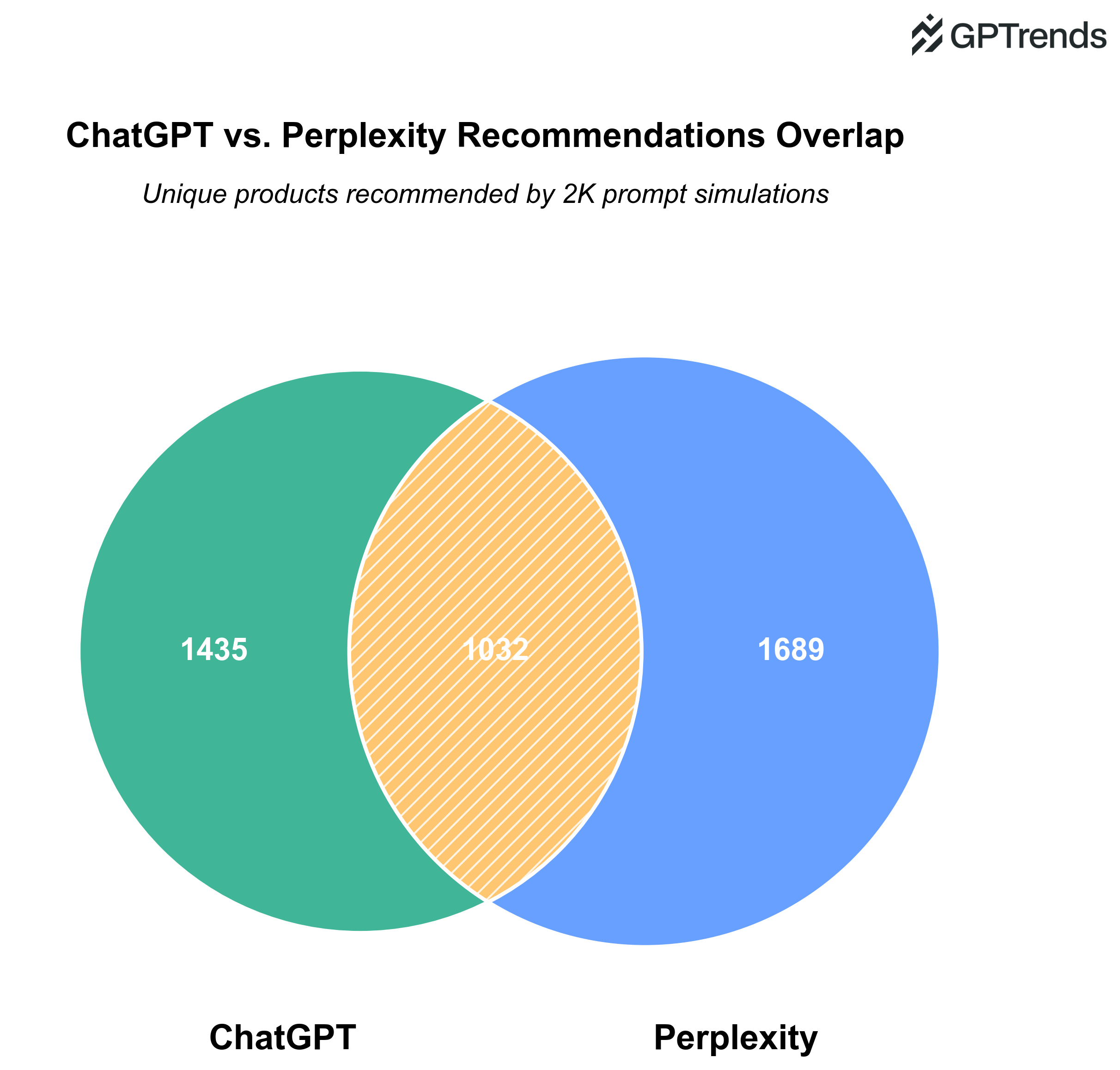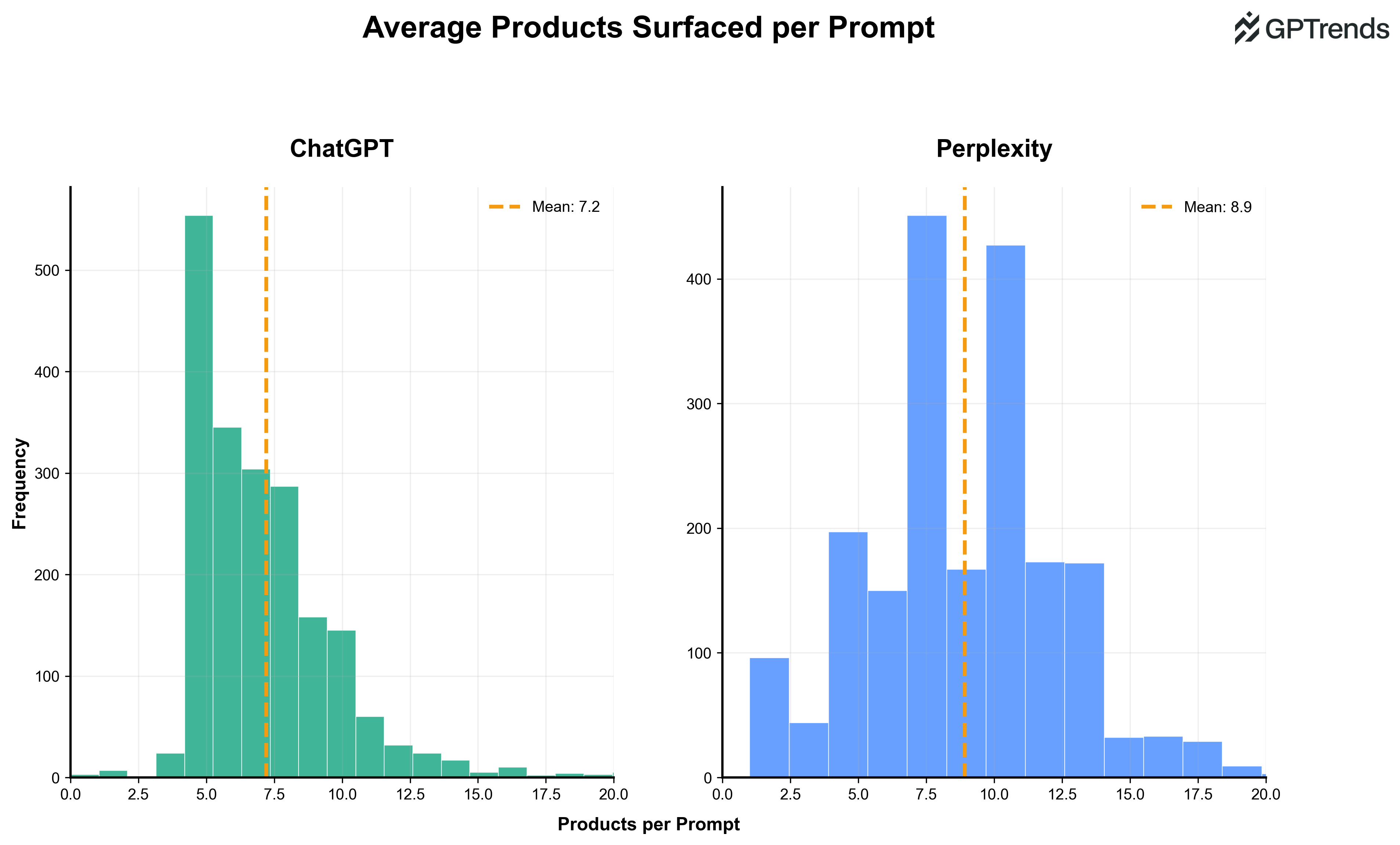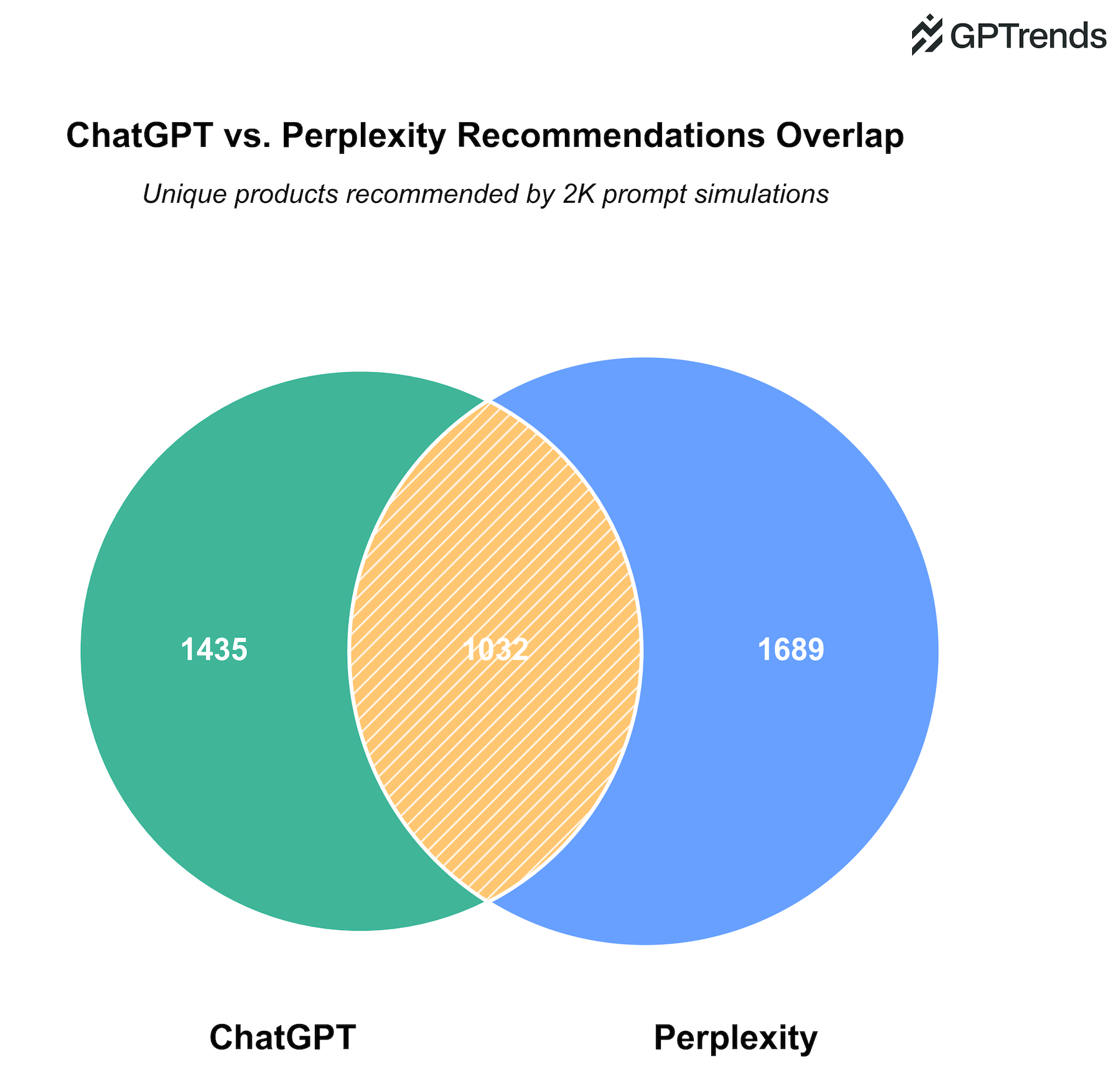AI Product Recommendations: ChatGPT vs. Perplexity Compared
Data Analysis

What are the key differences between product recommendations from ChatGPT vs Perplexity and what are the implications for AI Search optimization? We took a look.
For obvious reasons, ChatGPT has been viewed as synonymous with AI search. But Perplexity has been making some noise lately, hitting 170M monthly visitors in March and reportedly in talks with Apple and Samsung for default placement on their devices. Given this momentum, we decided to dig into how these platforms actually differ when it comes to product recommendations. [1]
For this analysis we compiled 200 representative prompts across B2B and consumer SaaS with high product discovery intent—queries like "Top tools for user and product analytics" or "Best team collaboration platforms." Each prompt was run 10 times across both ChatGPT and Perplexity to make the results statistically significant.
Finding #1: Perplexity Recommends More Products Per Response
Our analysis revealed that Perplexity surfaces ~26% more products on average—8.9 products per prompt compared to ChatGPT's 7.2. However, when you look across all 10 runs of each prompt, both platforms recommend roughly the same total number of unique products (around 18).
| Avg. Products Surfaced per Prompt | Total Products Surfaced (10x runs) | Unique Products Surfaced (10x runs) | % Unique | |
|---|---|---|---|---|
| ChatGPT | 7.2 | 72.1 | 18.4 | 25.5% |
| Perplexity | 8.9 | 89.2 | 18.4 | 20.6% |
What this means: While Perplexity gives more brands a chance to be seen in any single response, he "long tail" exposure over time is more limited than it initially appears.
The recommendation patterns also differ significantly. ChatGPT almost always recommends 5-7 products and rarely fewer, while Perplexity's recommendations are more varied—sometimes just a few top picks, other times extensive lists in table format.

Implication: Produts and services not making the top cut on ChatGPT are rarely be seen. On Perplexity, there's more variability and more slots available, giving emerging brands a better shot at occasional visibility.
Finding #2: Only 25% Overlap Between Platforms
One big question in AI Search optimization: Do you need to track multiple platforms, or do they all surface the same products anyway?
To answer this we looked at the overlap (Jaccard similarity) in the recommended products across the sample set of prompts. Overall we found them to be largely distinct: there was only 25% overlap between the products recommended by each platform.

Even when you control for long-tail or lesser known products that might be recommended on the margins, the limited overlap still persists. When filtering for products that are “consensus picks” for each platform recommended 100% of the time, still only roughly 1 out of 3 recommendations will be the same.
| Product Consistency | Mean Overlap | Median Overlap |
|---|---|---|
| Appears in any run | 28.8% | 27.8% |
| Appears in 60%+ of runs | 31.1% | 29.7% |
| Appears in 100% of runs | 33.7% | 33.3% |
This fragmentation likely stems from their different approaches to web search. With ChatGPT, the web search is set to ‘auto’ by default. We’ve found it’s triggered in roughly 20-30% of product discovery prompts, while Perplexity searches 100% of the time, pulling in more current information and newer companies.
Finding #3: Different Company Profiles Get Recommended
When we cross-referenced recommendations against Crunchbase data, clear patterns emerged. Perplexity's recommendations skewed toward newer, smaller companies:
- 32% fewer monthly visitors on average
- 13% fewer employees
- 8% less estimated revenue
For products that appeared only on one platform, the differences were even more pronounced—ChatGPT-exclusive recommendations were 3-10× larger in terms of traffic and employees compared to Perplexity-only products.
This makes sense: Perplexity's real-time web crawling naturally surfaces younger, more agile companies that are actively creating content and gaining recent traction, while ChatGPT leans toward established players with strong historical presence in its training data.
What This Means for AI Search Strategy
These differences aren't just noise—they reflect fundamental differences in how each platform's training data, search capabilities, and algorithms shape brand visibility. The reality: The brands dominating ChatGPT recommendations aren't necessarily the same ones getting surfaced on Perplexity — 75% of recommendations are platform-specific.
As the AI search landscape continues to fragment with new platforms emerging, successful brands will need to adopt a multi-platform approach from day one. The old playbook of optimizing for one dominant search engine doesn't work in a world where different AI platforms have fundamentally different recommendation behaviors. Brands that start tracking and optimizing across multiple AI platforms now will have an advantage as this space continues to evolve.
Want to see how your products rank across ChatGPT, Perplexity, and Google AI Overviews? Track and optimize your AI Search presence with GPTrends: Try it free
Citations
[1] Samsung may incorporate Perplexity’s AI tech in its phones